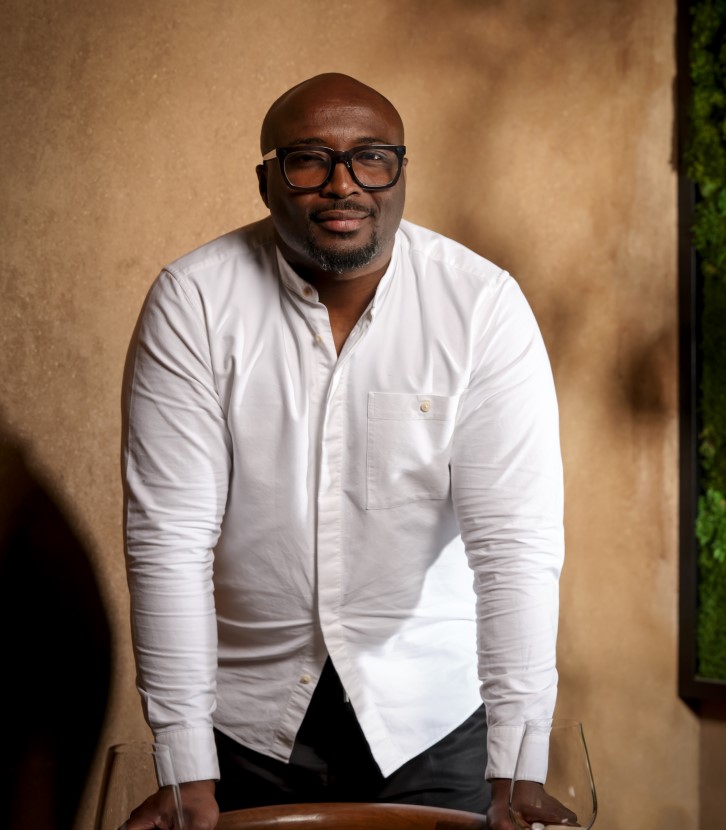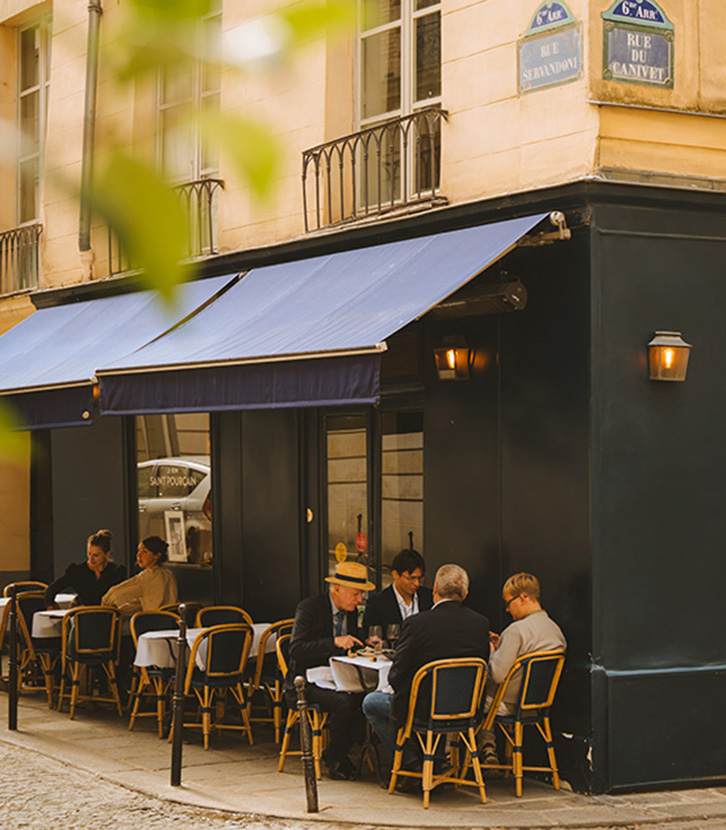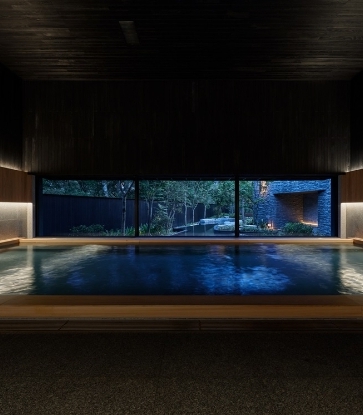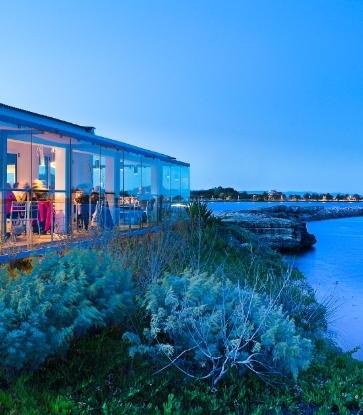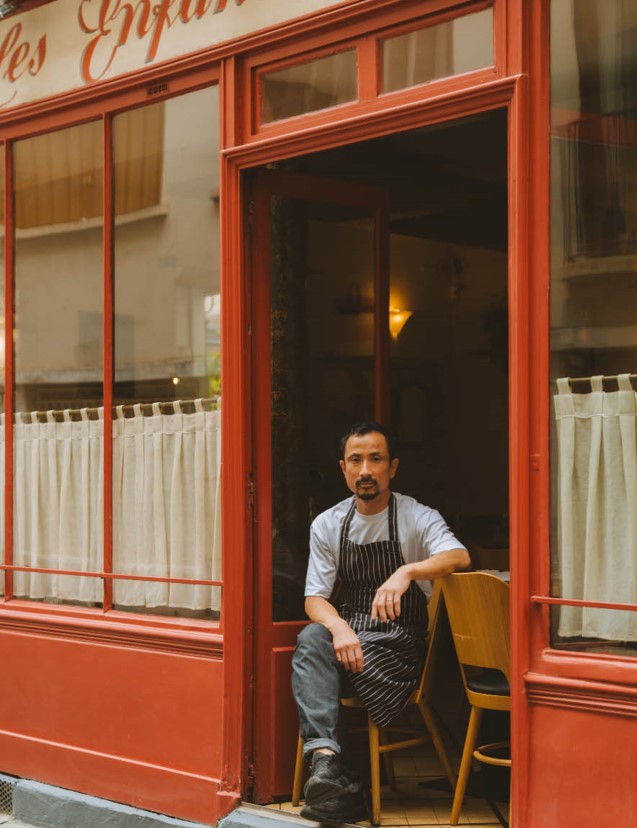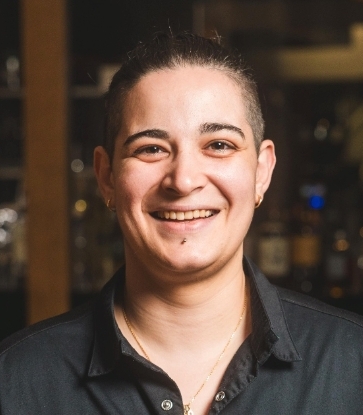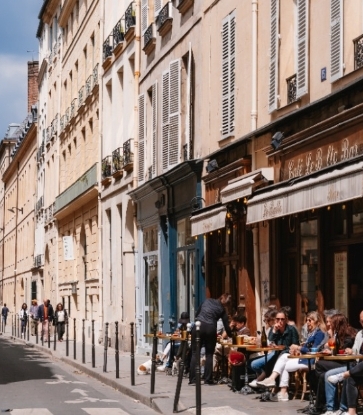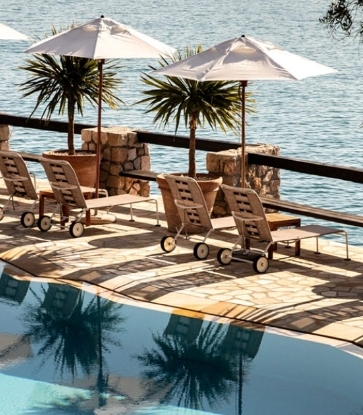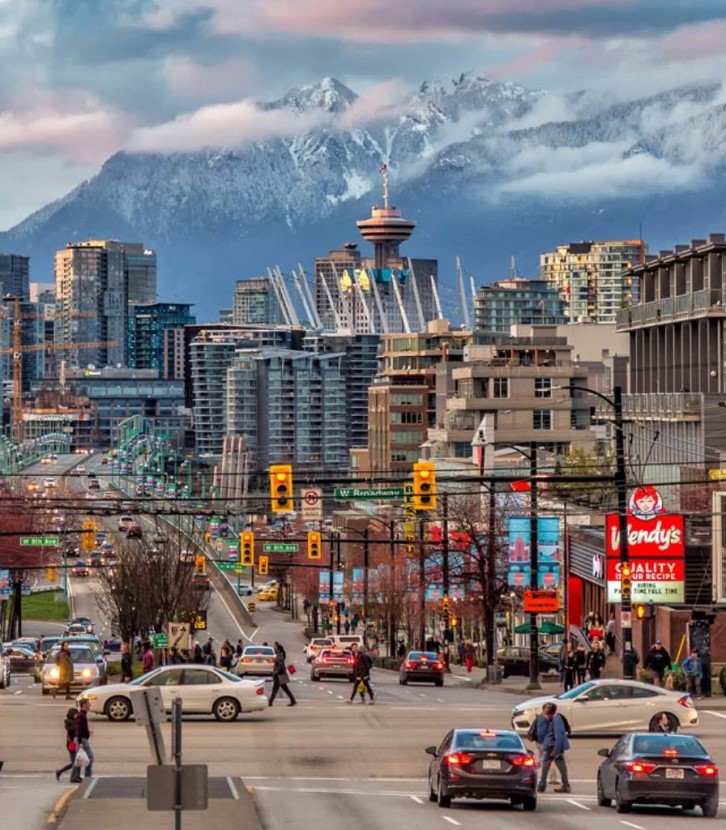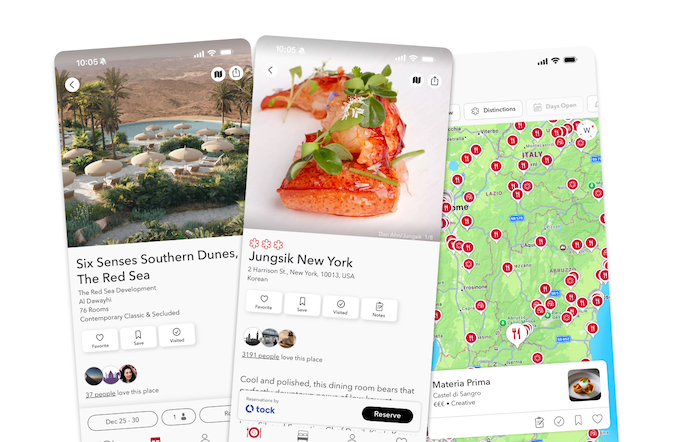Paris is a city where etiquette matters as much as the vinaigrette, and where a raised eyebrow often says more than a warm welcome. For the uninitiated, navigating the city’s dining culture can be daunting — but it doesn’t have to be.
This guide of Paris restaurant rules will help you approach your next reservation (if one’s needed — more on that shortly) with confidence. With insights from Kevin Deulio, former Bar Vendôme sommelier and now co-owner of MICHELIN Guide Inspector-approved Soces in Belleville, here’s what to know — and what to avoid — when dining out in Paris.
1. Reserve or Regret
Reservations are often a must in Paris, especially for the trendier spots. Many restaurants won’t accommodate walk-ins, no matter how charming your smile. On the other hand, restaurants like the beloved Le Baratin in Belleville make a point to carve out space for passersby.
TLDR: Do your research. Always check if a booking is required — usually, restaurants will link to reservation sites on their Instagram profiles.
2. Know the Local Dining Rhythms
While French meal schedules aren’t as vastly different from those of Americans as in Spain — dinner rarely starts past 9:30 p.m. — Parisian dining hours don’t always correspond with foreign appetites. Lunch usually runs from 12 p.m. to 2 p.m., but dinner begins later than in US establishments for instance — around 7:30 p.m.
If you find yourself strolling in the City of Light and hanger strikes, pas de souci: All-day restaurants exist. Brasseries, especially in more heavily touristed areas, tend to stay open all day, through breakfast, lunch and dinner. Adhering to the local rhythm is a personal choice — whether you care about fitting in. If you don’t, then by all means, order a brasserie steak frites at 5 p.m.
If you want to try to match the local schedule but tend to get peckish early evening, then embrace the tradition of the French apéro: a pre-meal apéritif with a light bite to tide you over until supper.
3. Start Your Meal Right
In cities like New York, you can usually slip in and out of shops and restaurants without ever removing your earbuds — not so much in Paris.
When you enter a restaurant, you’re expected to make eye contact and say “Bonjour” (hello) or “Bonsoir” (good evening) as soon as you enter. Failing to do so can set a pretty sour tone for the rest of your meal. It’s a quick gesture that goes a long way with the French.
Soces owner Kevin Deulio cautions, “Never seat yourself. And never sit at a table that’s not clean.” When you’re heading out after a meal, “Bonne journée,” (have a good day) or “Bonne soirée,” (good evening) are standard.
4. Don't Ignore Bread Basket Rules
“With French service, you always wait for your waiter to come to ask what you’d like for apéritif [the first drink to kick off the meal]. At that point, you can ask for water,” says Deulio. You can either request "une carafe d'eau" (a carafe of tap water) for free or bottled water or sparkling water, which you pay for.
In most French restaurants, you don’t have to ask for bread. “Bread is part of the French heritage,” says Deulio. While butter is deeply engrained in the French kitchen, it is ironically not served with bread. Usually, you can kindly ask for some and a restaurant will bring a few pats.
5. Haute Cuisine Without Breaking the Bank
Prix fixe menus, especially at lunchtime, are a great way to experience Paris’ haute cuisine at a value. Many fine restaurants serve stunning multi-course midday meals for a fraction of their dinner prices.
Some of the MICHELIN-vetted favorites include:
6. Don't Cast Aside the Dish of the Day
One of the reasons why Paris dining has historically been exceptional and remains so today is the access to farmers and producers. A restaurant like Les Résistants in the 10th arrondissement, for example, collaborates with hundreds of French farmers, producers and artisans throughout the year. Eating local and seasonal is a matter of fact.
Whether you’re in a more traditional spot or a restaurant like Les Résistants, which prides itself on its eco-conscious efforts, opting for the plat du jour (dish of the day) guarantees a meal grounded in the seasons, letting you sample the freshest, most authentic flavors.
7. Understand French Meat Cooking Standards
Be prepared for French meat to be cooked less than what Americans might expect. If you prefer your steak bien cuit (well done), be specific — but know it might earn you some side-eye.
“If you order red meat in France and they don’t ask you for your preference, it will come medium rare,” explains Deulio. “If you go to a respected restaurant, they’ll never serve you more than medium. If you ask for well done, that’s kind of a no-go. Not our culture.”
For red meat, there are three cooking styles: bleu (rare), saignant (medium rare) and à point (medium). Veal usually comes rosé — blushing pink, or medium.
8. Parisian Table Dos and Don’ts
The basic table etiquette in Paris follows the well-settled rules: Keep your elbows off the table and place your napkin on your lap. “Please don’t put your napkin on your plate — at any point,” stresses Deulio. Guests have the dirty habit of sometimes leaving them on dirty dishes after a meal. “I think it’s very rude.” He has a second PSA: “If you touch the bread, don’t put it back in the basket.”
What about the age-old question of how to summon the service staff? Deulio recommends addressing them as monsieur or madame. "That’s very elegant,” he says. Never say “service!” or snap your fingers. That’s a no, according to Deulio, as is “waving like a crazy person in the middle of the room.” Keep it cool: Try to make eye contact or catch their attention with a gentle “sil vous plait.”
One last piece of advice from Deulio is to keep your phone off the table. “For me, it’s impolite, first for the person you’re eating with. But also, we need to put things on the table. If your phone is there, we can’t properly take care of you.”
9. Brush Up On Your French Staples
At a brasserie, which translates to “brewery,” think lively, timeless and typically non-stop service. These establishments often operate late into the night, serving dishes like steak frites, towering seafood platters and the icon of French gastronomy, French onion soup. Pair your meal with a crisp glass of white wine or a local beer.
A bouillon is your go-to for hearty, traditional comfort food at prices that encourage sharing and tasting more. These historic spots specialize in crowd-pleasers like pot-au-feu, boeuf bourguignon or a generous bowl of lentils with sausage. Be sure to save room for dessert — a fluffy île flottante (floating island) or a rum-soaked baba au rhum are must-tries.
Bistros are where you head for more of a cozy, intimate vibe. The menus are seasonal and market driven. The dishes tend to be heartwarming — tender duck confit or perfectly poached salmon with a buttery wine sauce, followed by a fruity tarte topped with a dollop of crème fraîche. Wash it down with a glass of red from the chalkboard wine list.
10. The Tipping Point
The last Paris restaurant rule to know is about tipping. Know that service is included in your bill but rounding up or leaving a few euros for excellent service is appreciated. Keep it modest — a grand American-style tip is neither expected nor necessary.
“If you like the service, you should add a little something — a good tip for me is 5-10% in France,” says Deulio. “But no one will run after you if you don’t leave one.”
Related Articles:
- Check out all our Travel Guides
- See the rest of our Paris Travel Guide
- Julia Sedefdjian: On ‘The Bear,’ Southern Comfort in Paris, and a Decade as the Youngest MICHELIN-Starred Chef
Hero Image: © Debora Szpilman



